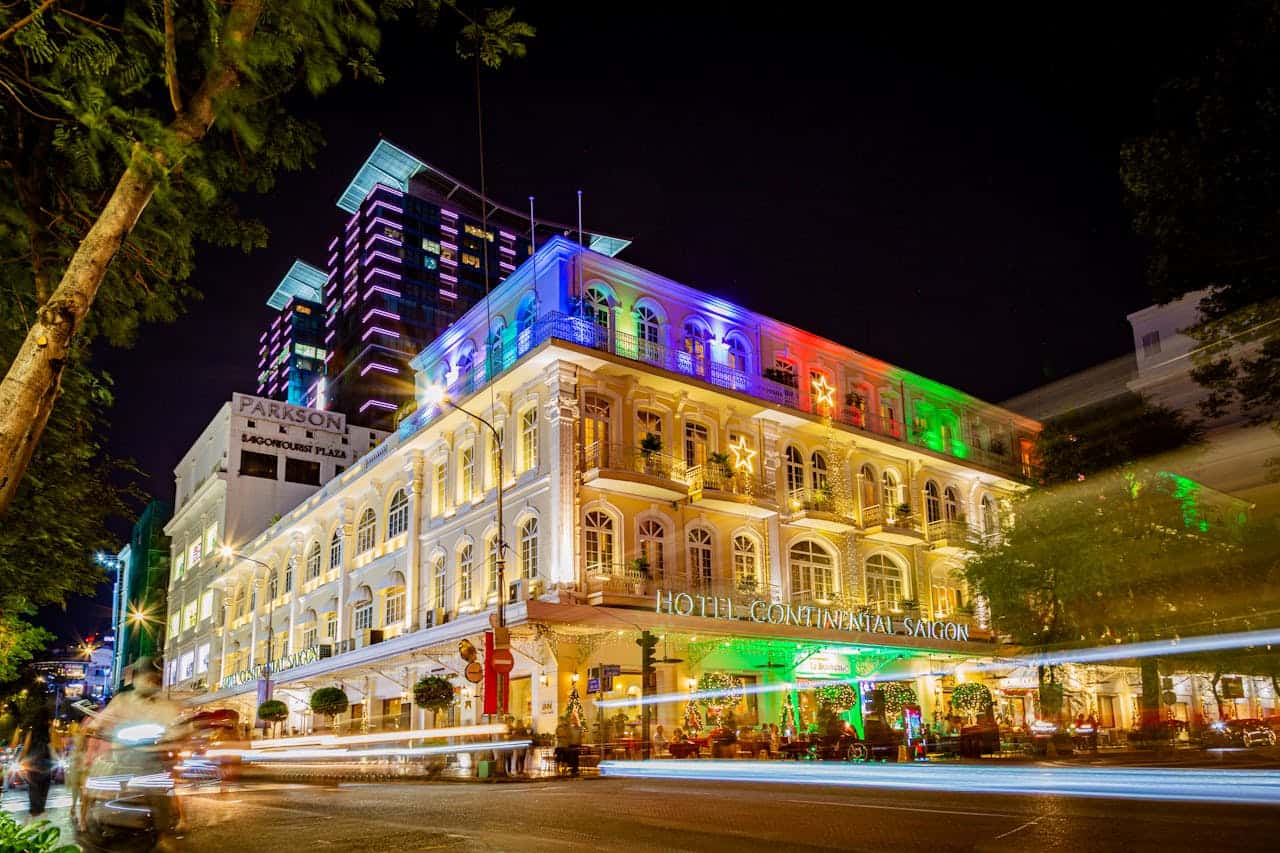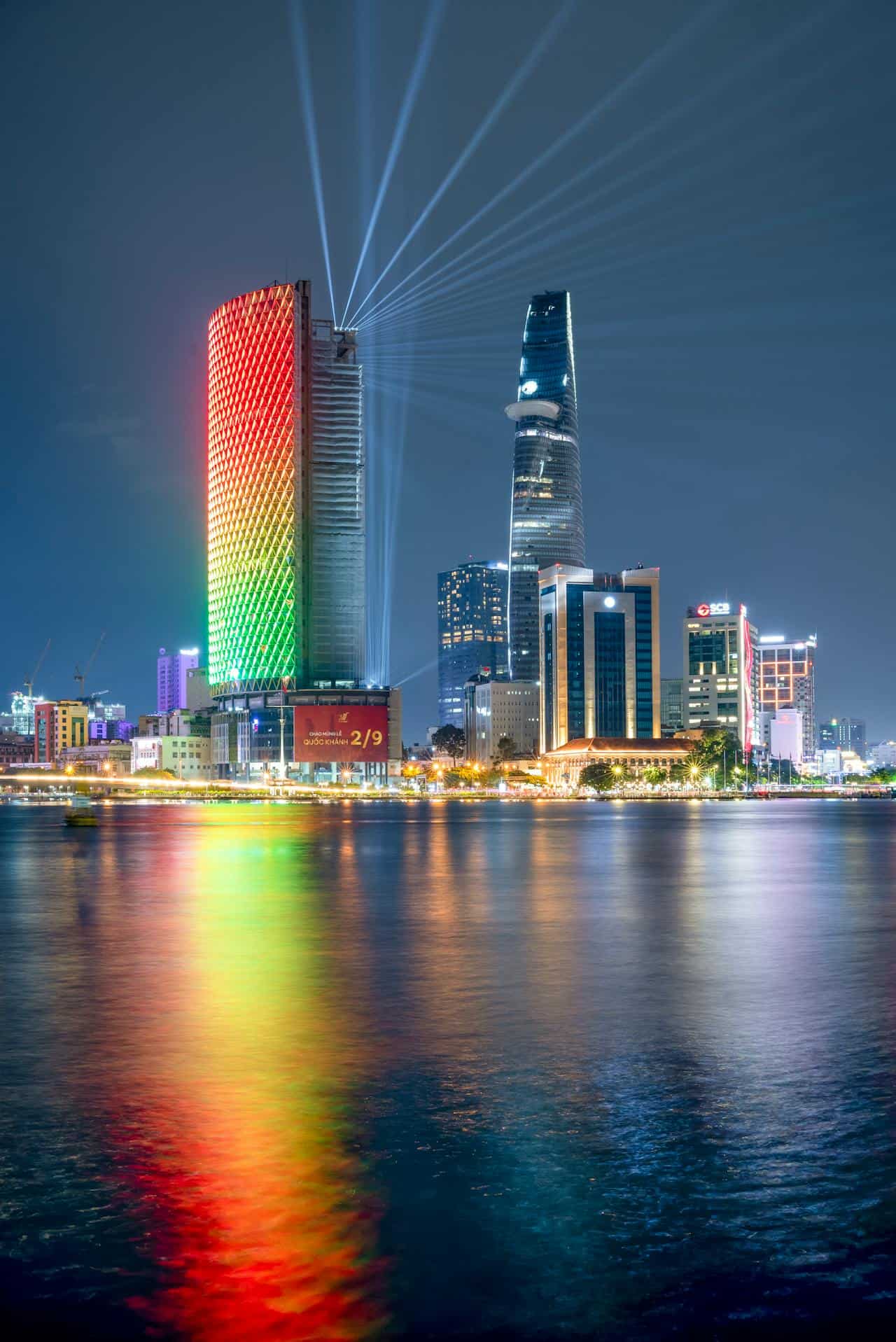
Ho Chi Minh is a vibrant blend of history, culture and modern energy. The streets buzz with motorbikes, the aroma of street food fills the air, and every corner offers a glimpse into its rich past and dynamic presence. From stunning Notre Dame Cathedral to the lively Ben Thanh Market, this city is a feast from the senses.
This is a review of a tour I’d recently found and really liked. While I haven’t personally taken it, I’ve done the research – digging into the itinerary, reviews and details to give you a clear picture of what it offers. It’s a great mix of iconic landmarks and unique experiences, designed to help you uncover the heart of the city in a way that feels both efficient and memorable.
Get ready to uncover the the stories, sights and surprises that make this destination unforgettable!
Historical Treasures
Reunification Palace: Where History Changed Course
The Reunification Palace, formerly known as Independence Palace, stands as one of Vietnam’s most significant historical landmarks. Originally built in the 1860s as Norodom Palace to house the French Governor-General of Cochinchina, the structure has witnessed pivotal moments in Vietnamese history.
After suffering damage from bombing in 1962 during an assassination attempt on President Ngo Dinh Diem, the palace was completely rebuilt in modernist style by Vietnamese architect Ngo Viet Thu, completed in 1966.
What makes this site particularly compelling is its connection to the end of the Vietnam War. On April 30, 1975, North Vietnamese Army tanks crashed through the palace gates, leading to the Fall of Saigon and marking the war’s conclusion.
Today, the palace remains largely unchanged since that historic day, with its 1960s architecture, war rooms, and telecommunications center frozen in time.
Visitors can explore the president’s living quarters, meeting rooms, and even a shag-carpeted entertainment area complete with a barrel-shaped bar that epitomizes the era’s distinctive style.
Notre Dame Cathedral: French Gothic Splendor in Saigon
The Notre Dame Cathedral of Saigon, officially Cathedral Basilica of Our Lady of The Immaculate Conception, represents the cultural imprint left by French colonialism.
Established by French colonists in the 1860s, the cathedral was constructed between 1863 and 1880 in Romanesque style. Its striking red brick exterior was built entirely with materials imported from France, and its twin bell towers rise 190 feet into the Saigon skyline.
The cathedral became a basilica in 1962 when Pope John XXIII elevated its status, and it continues to serve as a spiritual center for Vietnam’s Catholic community.
Its architectural significance, with thick walls, high round arches, and impressive stained glass windows depicting biblical scenes, makes it one of the most beautiful cathedrals constructed by the French in their colonies.

Central Post Office: A Colonial Architectural Gem
Just across from Notre Dame stands the Central Post Office, a magnificent example of French colonial architecture. Often mistakenly attributed to Gustave Eiffel (of Eiffel Tower fame), the building was actually designed by Marie-Alfred Foulhoux and constructed between 1886 and 1891.
The striking structure combines Gothic, Renaissance and French influences with vaulted ceilings, ornate details, and an impressive facade.
Still functioning as a post office today, the interior features historic maps of Vietnam painted on the walls and an impressive portrait of Ho Chi Minh.
The building represents a perfect blend of practical function and architectural beauty that transports visitors back to colonial-era Saigon.

War Remnants Museum: Confronting the Past
Perhaps the most sobering stop on the tour, the War Remnants Museum provides a stark and unflinching look at the Vietnam War and its devastating impact on the country’s civilians.
Opened in 1975 as the “Exhibition House for US and Puppet Crimes,” the museum houses a comprehensive collection of photographs, artifacts, and exhibits that document the brutality of war.
From the outdoor display of American military equipment to the harrowing photographic exhibits inside, the museum offers visitors a Vietnamese perspective on what locals call the American War.
While challenging emotionally, this stop provides essential context for understanding Vietnam’s modern identity and resilience.
Cu Chi Tunnels: Underground Resilience
The second leg of the tour takes visitors 70 kilometers northwest of Ho Chi Minh City to the legendary Cu Chi Tunnels. This vast 250-kilometer network of underground passages served as the base of operations for Viet Cong guerrillas during the war.
Constructed over decades beginning in the 1940s during the fight against French colonial forces, the tunnels were later expanded and became crucial to resistance efforts during the Vietnam War.
This subterranean village included living quarters, kitchens, meeting rooms, hospitals, and weapon factories, all hidden beneath the jungle floor. The ingenuity and determination of the Vietnamese people are on full display here, with booby traps, disguised entrances, and ventilation systems demonstrating remarkable engineering under extreme conditions.
Visitors can crawl through a section of the tunnels (widened for tourists) to gain a small sense of the claustrophobic conditions endured by those who lived and fought from this underground network.
Best Time To Visit
Ho Chi Minh City experiences a tropical climate with two distinct seasons that shape your travel experience throughout the year.
Dry Season (December to April) is widely considered the optimal time to visit. During these months, you’ll enjoy lower humidity, pleasant temperatures averaging around 28°C (82°F), and minimal rainfall.
These ideal conditions make exploring the vibrant streets, historical landmarks, and day trips to attractions like the Cu Chi Tunnels significantly more comfortable, as you won’t be interrupted by sudden downpours.
January and February stand out as the absolute best months for your visit. These months offer the lowest humidity levels of the year, with February seeing as little as 5mm of rainfall all month.
The comfortable temperatures create perfect conditions for walking tours, outdoor dining, and photography opportunities throughout the city and surrounding areas.
Special Consideration – Tet Holiday: If you’re planning a January or February visit, be aware of the Vietnamese Lunar New Year (Tet), which significantly impacts the city’s rhythm. While experiencing Tet offers cultural immersion with beautiful decorations and festivities, many businesses close as locals travel to their hometowns, and prices increase across the board. Unless experiencing Tet is specifically part of your travel goals, consider planning around this major holiday.

What Sets This Tour Apart: Unmatched Value and Experience
1. Exceptional Value
At a starting price of just $37+, this tour delivers extraordinary bang for your buck. Consider what’s included – transportation to multiple sites spanning the city and countryside, entrance fees to five major attractions, a professional English-speaking guide, lunch, and bottled water.
Attempting to arrange these experiences independently would not only cost significantly more but would require navigating unfamiliar transportation systems and potentially waiting in multiple ticket lines.
The tour’s all-inclusive nature eliminates these hidden costs of time and stress, making the modest price tag even more impressive. For budget-conscious travelers seeking maximum cultural and historical immersion without breaking the bank, this tour represents one of Ho Chi Minh City’s best travel investments.
2. Comprehensive Historical Narrative
Unlike many fragmented tours that focus solely on city attractions or the tunnels, this package weaves together Vietnam’s complex historical threads into a coherent narrative.
From French colonial influence seen in the cathedral and post office to the Vietnamese perspective on the war at the museum and tunnels, visitors gain a multi-dimensional understanding of the forces that shaped modern Vietnam.
3. Efficiency Without Compromise
Combining two major experiences—city landmarks and the Cu Chi Tunnels—into a single day optimizes valuable vacation time while still allowing adequate exploration of each site.
The thoughtful sequencing of attractions builds chronological context, creating a more meaningful experience than random sightseeing.
4. Flexibility
The option to choose between different tour sizes and pickup arrangements demonstrates the tour operator’s understanding that travelers have varying preferences.
Whether you prefer the personalized attention of a smaller group or the economy of a larger one, the tour adapts to your needs while maintaining the same comprehensive itinerary.
5. Local Insights and Authentic Experiences
With English-speaking guides leading the way, visitors benefit from local perspectives and cultural insights that guidebooks simply cannot provide.
The inclusion of Vietnamese snacks at the Cu Chi Tunnels adds a sensory dimension to the historical experience, allowing travelers to literally taste local culture.

Conclusion
For travelers seeking to understand Vietnam beyond surface-level tourism, this tour delivers exceptional value. By combining Ho Chi Minh City’s architectural treasures with the sobering realities of war history and the inspiring resilience represented by the Cu Chi Tunnels, visitors complete the day with a profound appreciation for Vietnam’s complex journey to the vibrant nation it is today.
Whether you’re a history enthusiast, architecture lover, or cultural explorer, this thoughtfully designed tour offers the perfect introduction to Ho Chi Minh City’s multifaceted identity. In a single day, you’ll traverse centuries of history, from colonial influence to wartime struggle to modern revival—a journey that would be difficult to arrange independently with the same efficiency and insight.




